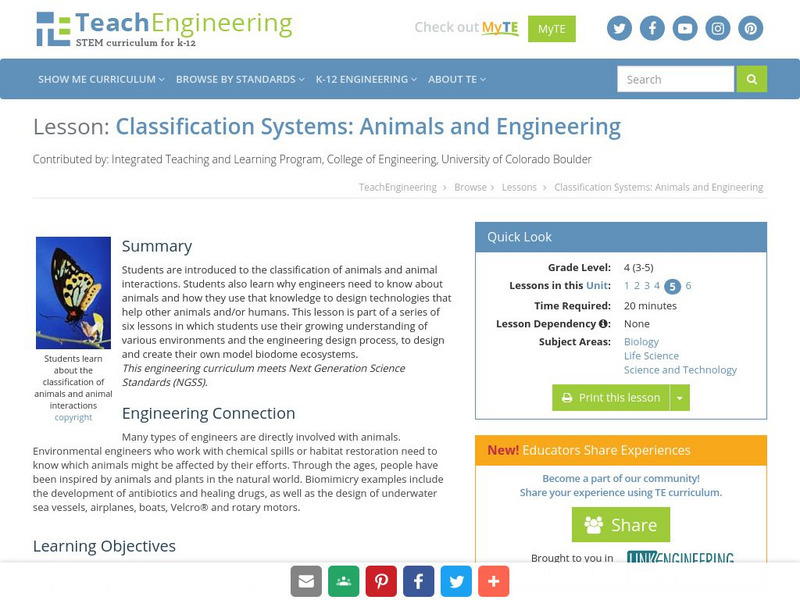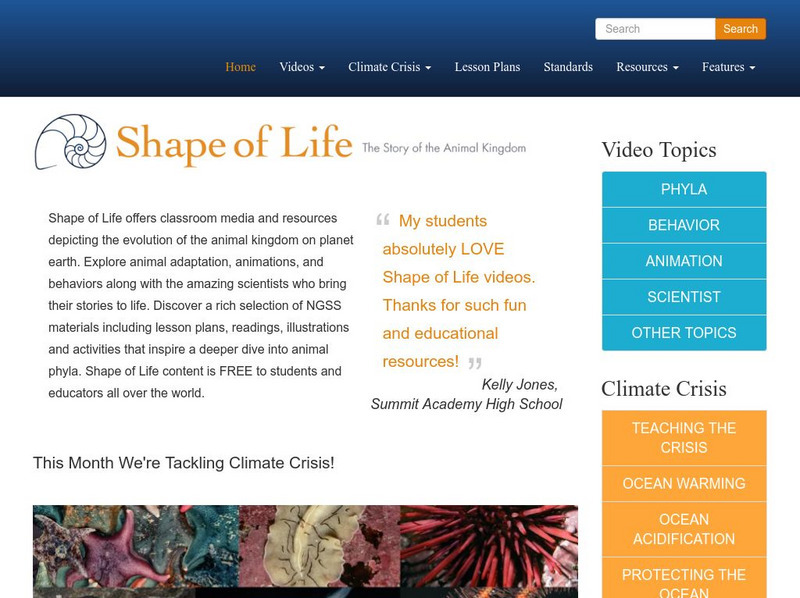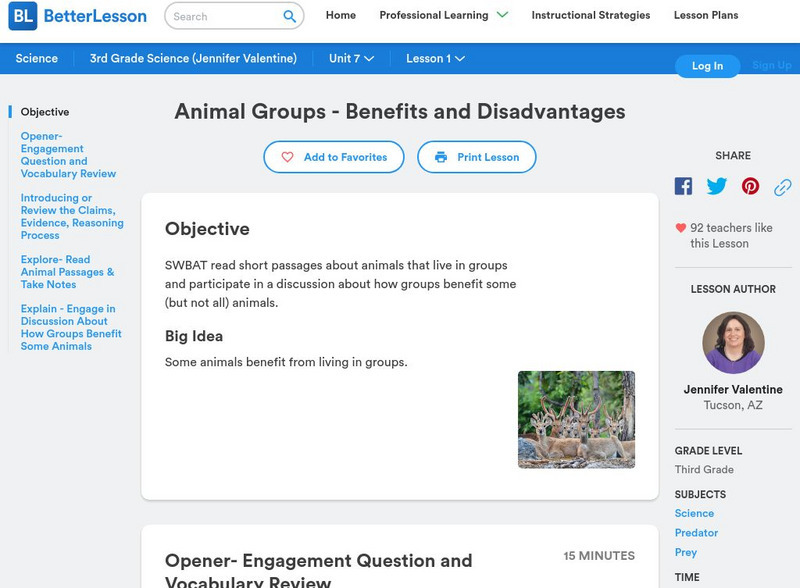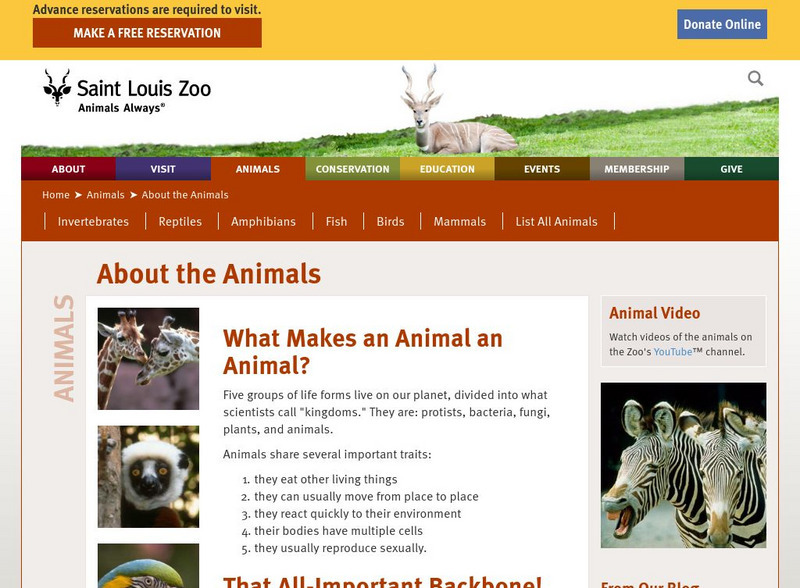Curated OER
Earthworms
Fifth graders research the earthworm and write a one paragraph report on its anatomy and habitat. They learn about worms and how to dissect them through Video Streaming and virtual dissections, along with actually dissect a worm as...
Curated OER
Salinity Of Soil
Fourth graders investigate the contents of various types of soil to determine the differences in salinity levels. They conduct an experiment of observing the plants in the different soils. Students then determine survival rates by...
Curated OER
A World of Feathered Friends
pupils will learn to
respect the nature around them. This respect is vital because ignorance of surrounding
nature can lead to carelessness when curiosity goes awry. A perfect example of this
wayward curiosity took place at our school...
Curated OER
Sharkland Wiki
High schoolers, while researching the waters around southern Africa and viewing a video of the episode "Sharkland" from Thirteen's series NATURE, critique reliability of online resources and analyze the various components of a wiki. They...
Curated OER
Super Scientists Bingo
In this science worksheet, middle schoolers select twenty-five scientists from the list to fill in their bingo card. Then they match each of the scientists listed to their correct description strip.
Curated OER
Parts of a Crinoid
Students study the parts of a crinoid. For this parts of a crinoid lesson, students look at pictures of a crinoid fossil or examine an actual fossil if one is available. They match names to pictures of the parts in the second part of the...
ArtsNow
Arts Now Learning: Classification of Animals: "Connect Your Animal Show" [Pdf]
Fifth graders learn about animal classification by reviewing the taxonomy system, then looking at pictures of animals as if they were scientists, acting out an animal's characteristics, then classifying their animal.
Georgia Department of Education
Ga Virtual Learning: Biology: Animals
Through video clips. informational text, interactive activities, and assessment opportunities, students study and learn about the classification of animals.
BiologyWise
Biology Wise: Classification of Animals
The classification system for animals is explained and examples given. Includes suggestions for how to teach the system to younger students and how to create a classification chart of the animal kingdom.
Other
Science4 Us: Animals
In online and offline activities, students broaden their understanding of animals by learning to identify and classify animals into six categories: mammals, birds, fish, amphibians, reptiles, and invertebrates.
Alabama Learning Exchange
Alex: Animal, Insect, and Bird Classification
As a follow-up to a unit on the classifications of animals, insects, and birds, students will attend a distance learning field trip. The students will then e-mail trusted adults some of the information learned about the classification of...
TeachEngineering
Teach Engineering: Animals and Engineering
Students are introduced to the classification of animals and animal interactions. Students also learn why engineers need to know about animals and how they use that knowledge to design technologies that help other animals and/or humans....
Alabama Learning Exchange
Alex: Animal Classification
For this lesson, students will discuss the classification of animals. They will work in groups to research and present classification information about a selected group of animals.
Globio
Glossopedia: Animals
The animal kingdom and its classification are explained and broken down into vertebrates and invertebrates in this resource. "Best-of" the animal kingdom list given - fastest, smallest, largest, strongest and more.
Sea Studios Foundation
Shape of Life: The Story of the Animal Kingdom
Shape of Life is a series of videos which explore the evolution of the animal kingdom. Discover those who study animals and the methods in which these scientists use to learn more about them.
Other
It's All About What's Inside. Classification and the Tree of Life [Pdf]
In this science lesson, students look at how animals have traditionally been classified in a tree of life diagram by examining the characteristics of plastic eggs. They then analyze the genetic code assigned for each egg and look for...
CK-12 Foundation
Ck 12: Episd: Animal Classification
[Free Registration/Login may be required to access all resource tools.] Check out the diverse traits that animals can have that put them into different Phyla to make it easier to classify them.
Georgia Department of Education
Ga Virtual Learning: Ap Biology: Animals
This unit focuses on the unique structure and function of both invertebrate and vertebrate animals. Students review their understanding of animal diversity, and take a closer look at the various organ systems found in the animal kingdom.
Better Lesson
Better Lesson: Animal Groups Benefits and Disadvantages
Third graders read short passages about animals that live in groups and participate in a discussion about how groups benefit some (but not all) animals.
A-Z Animals
A Z Animals: Reference: Animal Classification
This entry identifies the defining characteristics of animal classification.
Smithsonian Institution
Smithsonian National Zoo: Classification Systems
A great overview of the science of classification. Topics addressed include summaries of the five kingdoms, the seven taxa, the definition of a species and the classification of the panda.
National Geographic Kids
National Geographic Kids: Animals
National Geographic site offers interesting facts on some of your favorite animals. Offers photos, postcards, fun facts and more.
Saint Louis Zoo
Saint Louis Zoo: About the Animals: What Makes an Animal an Animal?
Short introduction to animals explains the important traits that all animals share and the differences between vertebrates and invertebrates.
CK-12 Foundation
Ck 12: Biology: Animals: Overview Study Guide
This comprehensive study guide covers the main terms and concepts needed for a biology unit on animals.








![Arts Now Learning: Classification of Animals: "Connect Your Animal Show" [Pdf] Lesson Plan Arts Now Learning: Classification of Animals: "Connect Your Animal Show" [Pdf] Lesson Plan](https://d15y2dacu3jp90.cloudfront.net/images/attachment_defaults/resource/large/FPO-knovation.png)










